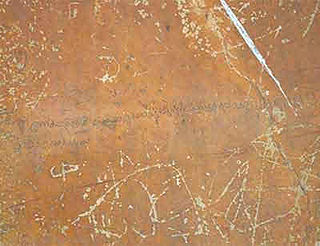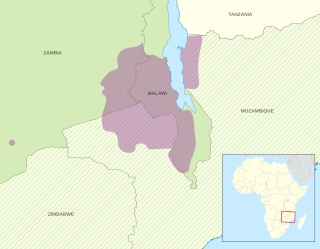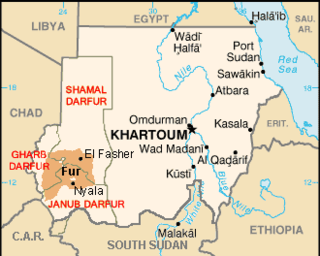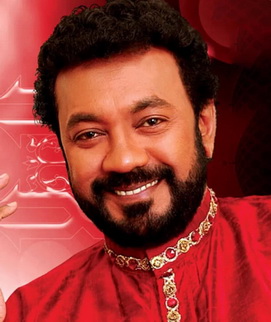Related Research Articles

Sinhala, sometimes called Sinhalese, is an Indo-Aryan language primarily spoken by the Sinhalese people of Sri Lanka, who make up the largest ethnic group on the island, numbering about 16 million. Sinhala is also spoken as the first language by other ethnic groups in Sri Lanka, totalling about 2 million speakers as of 2001. It is written using the Sinhala script, which is a Brahmic script closely related to the Grantha script of South India.

Chewa is a Bantu language spoken in Malawi and a recognised minority in Zambia and Mozambique. The noun class prefix chi- is used for languages, so the language is usually called Chichewa and Chinyanja. In Malawi, the name was officially changed from Chinyanja to Chichewa in 1968 at the insistence of President Hastings Kamuzu Banda, and this is still the name most commonly used in Malawi today. In Zambia, the language is generally known as Nyanja or Cinyanja/Chinyanja '(language) of the lake'.

Hurrian is an extinct Hurro-Urartian language spoken by the Hurrians (Khurrites), a people who entered northern Mesopotamia around 2300 BC and had mostly vanished by 1000 BC. Hurrian was the language of the Mitanni kingdom in northern Mesopotamia and was likely spoken at least initially in Hurrian settlements in modern-day Syria.

Greenlandic is an Eskimo–Aleut language with about 57,000 speakers, mostly Greenlandic Inuit in Greenland. It is closely related to the Inuit languages in Canada such as Inuktitut. It is the most widely spoken Eskimo–Aleut language. In June 2009, the government of Greenland, the Naalakkersuisut, made Greenlandic the sole official language of the autonomous territory, to strengthen it in the face of competition from the colonial language, Danish. The main variety is Kalaallisut, or West Greenlandic. The second variety is Tunumiit oraasiat, or East Greenlandic. The language of the Inughuit of Greenland, Inuktun or Polar Eskimo, is a recent arrival and a dialect of Inuktitut.

The Fur language or For; is a Nilo-Saharan language spoken by the Fur of Darfur in Western Sudan and Chad. It is part of a broader family of languages known as the Fur languages.
Yaqui, locally known as Yoeme or Yoem Noki, is a Native American language of the Uto-Aztecan family. It is spoken by about 20,000 Yaqui people in the Mexican state of Sonora and across the border in Arizona in the United States. It is partially intelligible with the Mayo language, also spoken in Sonora, and together they are called Cahitan languages.
In Tamil, honorifics governs daily speech and register of both written and spoken communication. Traditionally, Tamil has been classified into two registers viz செந்தமிழ் (Centamiḻ) meaning 'classical' or 'pure ' Tamil and கொடுந்தமிழ் (Koṭuntamiḻ) meaning 'corrupt' Tamil. A huge feature of this difference is honorifics. Tamil honorifics usually are suffixes, although prefixes are not uncommon.
The grammar of Classical Nahuatl is agglutinative, head-marking, and makes extensive use of compounding, noun incorporation and derivation. That is, it can add many different prefixes and suffixes to a root until very long words are formed. Very long verbal forms or nouns created by incorporation, and accumulation of prefixes are common in literary works. New words can thus be easily created.
Tooro or Rutooro is a Bantu language spoken mainly by the Tooro people (Abatooro) from the Tooro Kingdom in western Uganda. There are three main areas where Tooro as a language is mainly used: Kabarole District, Kyenjojo District and Kyegegwa District. Tooro is unusual among Bantu languages as it lacks lexical tone. It is most closely related to Runyoro.

Conganige Joseph Malsi Jackson Anthony, commonly known as Jackson Anthony, was a Sri Lankan actor in film, theatre and television. One of the most popular artists in Sri Lanka, Anthony won the award for the Best Actor a record sixteen times. Primarily active as an actor in all three media, he appeared before the public in versatile forms; director, producer, singer, screenwriter, television host, novelist, columnist, lyricist, historian and traveller.
Tetelcingo Nahuatl, called Mösiehuali̱ by its speakers, is a Nahuatl variety of central Mexico. It is one of the core varieties closely related to Classical Nahuatl. It is spoken in the town of Tetelcingo, Morelos, and the adjacent Colonia Cuauhtémoc and Colonia Lázaro Cárdenas. These three population centers lie to the north of Cuautla, Morelos and have been largely absorbed into its urban area; as a result the Tetelcingo language and culture are under intense pressure.
In linguistics, pluractionality, or verbal number, if not used in its aspectual sense, is a grammatical aspect that indicates that the action or participants of a verb is, or are, plural. This differs from frequentative or iterative aspects in that the latter have no implication for the number of participants of the verb.
In linguistics, an honorific is a grammatical or morphosyntactic form that encodes the relative social status of the participants of the conversation. Distinct from honorific titles, linguistic honorifics convey formality FORM, social distance, politeness POL, humility HBL, deference, or respect through the choice of an alternate form such as an affix, clitic, grammatical case, change in person or number, or an entirely different lexical item. A key feature of an honorific system is that one can convey the same message in both honorific and familiar forms—i.e., it is possible to say something like "The soup is hot" in a way that confers honor or deference on one of the participants of the conversation.
The grammar of the Otomi language displays a mixture of elements of synthetic and analytic structures. Particularly the phrase-level morphology is synthetic, whereas the sentence-level is analytic. Simultaneously, the language is head-marking in terms of its verbal morphology, but not in its nominal morphology, which is more analytic. Otomi recognizes three large open word classes of nouns, verbs, and particles. There is a small closed class of property words, variously analyzed as adjectives or stative verbs.
Temoaya Otomi, also known as Toluca Otomi or Otomi of San Andrés Cuexcontitlan, is a variety of the Otomi language spoken in Mexico by ca. 37,000 people in and around the municipality of Temoaya, and in three communities within the municipality of Toluca: San Andrés Cuexcontitlán, San Pablo Autopan and San Cristobal Huichochitlan. The two varieties are quite different. The speakers themselves call the language Ñatho. Lastra (2001) classifies it as a southwestern dialect along with the dialects of Mexico state. Lastra also notes that the endangered Otomí dialect of San Felipe in eastern Michoacán is most similar to the Otomí spoken in San Andrés Cuexcontitlan.
The Fwe language, also known as Chifwe, is a Bantu language spoken by the Fwe people in Namibia and Zambia. It is closely related to the Subia language, Chisubia, and is one of several Bantu languages that feature click consonants.
Pular grammar is the set of structural rules that govern the Pular language, one of the Fula languages of the Niger-Congo language family spoken in West Africa. It is complicated and varies from region to region. This may explain why it is virtually impossible to find literature that teaches advanced topics in Pular grammar. The following explanation concerns mainly the Pular language spoken in Futa Jallon. To facilitate learning, all expressions are translated into English.
The Ikpeng language is the language of the Ikpeng people who live in the Xingu Indigenous National Park in Mato Grosso, Brazil. There are approximately 500 speakers. Ikpeng is a language with high transmission, meaning it is passed on from parent to child at a high rate, with all members speaking the language. The majority of members are also bilingual speakers of Portuguese. The Ikpeng language is part of the Carib (Karib) language family.
The grammar of the constructed Naʼvi language was created for the movie Avatar by Paul Frommer. It is a tripartite, primarily affixing agglutinative language.
This page describes the grammar of Maithili language, which has a complex verbal system, nominal declension with a few inflections, and extensive use of honoroficity. It is an Indo-Aryan language native to the Maithili people and is spoken in the Indian state of Bihar with some speakers in Jharkhand and nearby states.The language has a large number of speakers in Nepal too, which is second in number of speakers after Bihar.
References
- ↑ "ගෞරවාර්ථයේ බහූ වචන ඒක වචන නාම පද අගට 'ඕ','හු' යන බහූ වචන ප්රත්ය හෝ 'ආණ', 'අණ', 'අණි' යන ගෞරවාර්ථ ප්රත්ය යෙදූවිට සෑදෙන පද උක්ත කලවිට සෑදෙන අවසන් පදය බහූ වචන ස්වරූපය ගනී" [When plural words with honorific meanings are added to the end of singular nouns, the final word formed takes the form of a plural word.] (in Sinhala). Archived from the original on 2016-03-04.
- ↑ "පන්සිය පනස් ජාතක පොත් වහන්සේ: අප භාවිත කරන "වහන්සේ" යන ගෞරවාර්ථ පදය මෙ ම් ග්රන්ථය ට හිමි වීම තුළින් ම එය මනා ව අවබෝධ වේ" [The Book of Five Hundred and Fifty Jatakas: The fact that the honorific term "Thero" we use is attributed to this book is well understood.] (in Sinhala). Archived from the original on January 8, 2014.
- ↑ "Shilpasayura-ගෞරවාර්ථයේ බහූ වචන".
